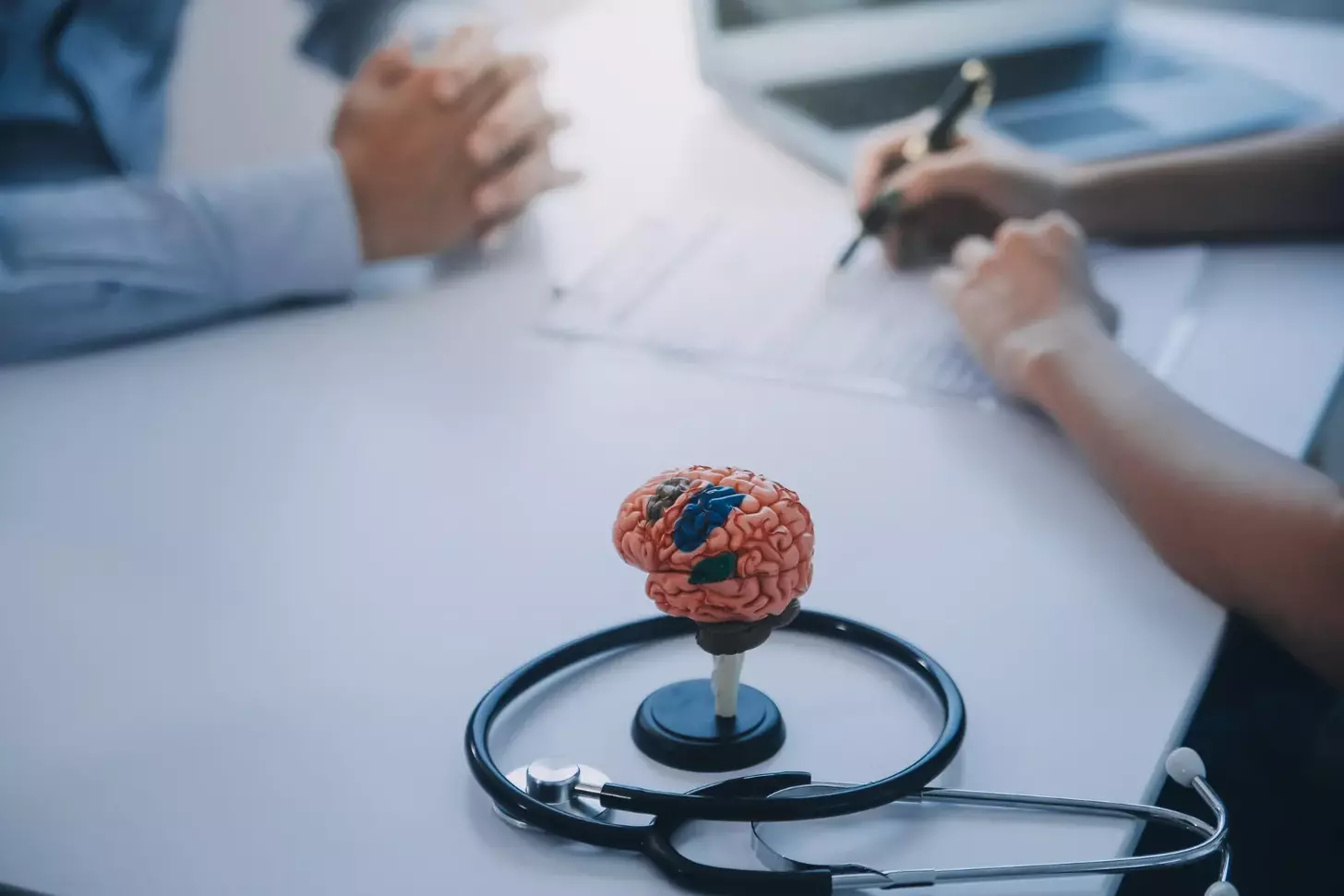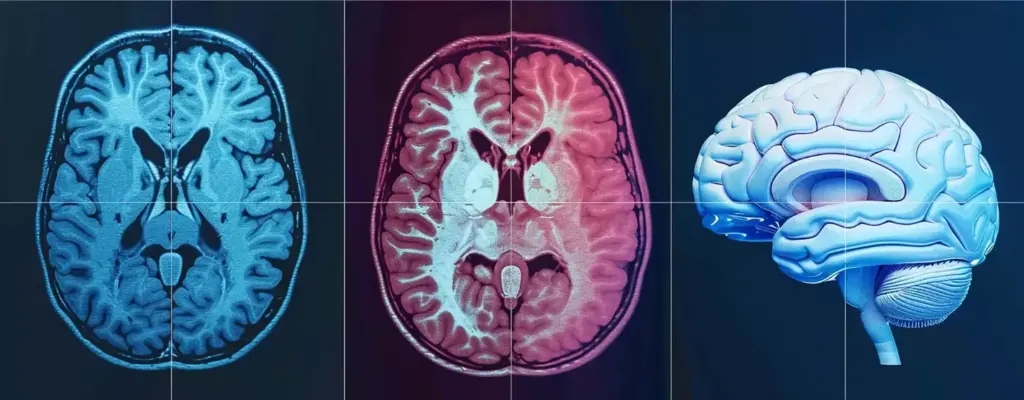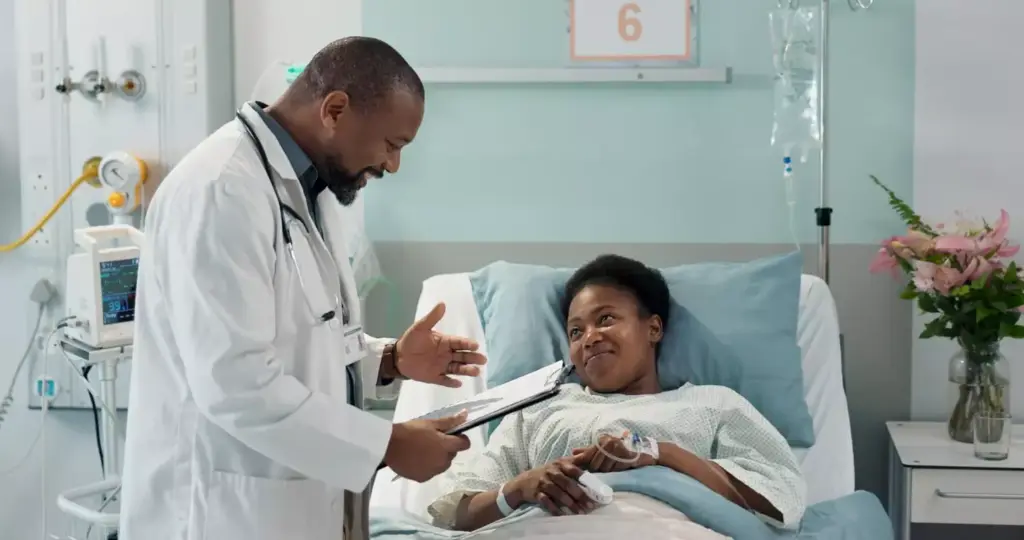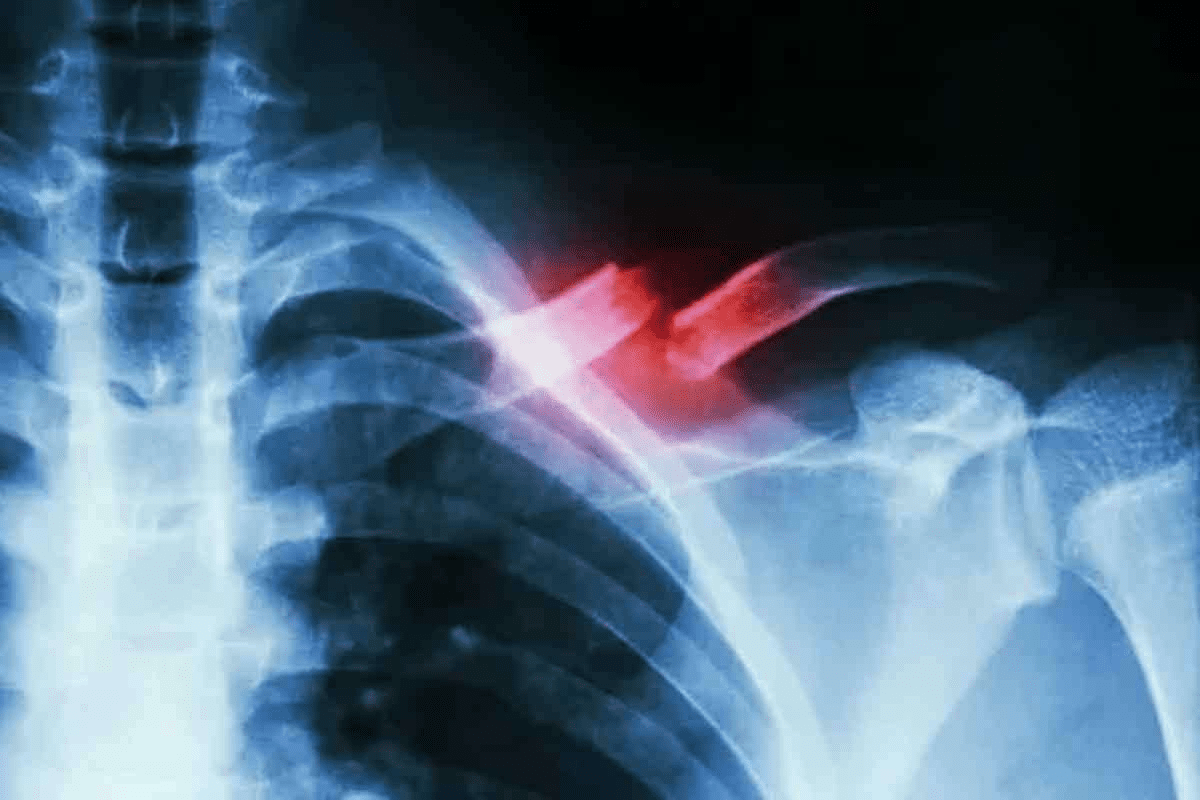Last Updated on November 26, 2025 by Bilal Hasdemir

Getting a brain tumor diagnosis can change your life. It brings a lot of uncertainty and worries about what’s next. At Liv Hospital, we get how tough this diagnosis is.
The chance of curing a brain tumor depends on its type, where it is, and if it can be removed. Some tumors that aren’t cancerous can be treated with surgery. But, tumors that are cancerous and can’t be removed are much harder to deal with.
We know every patient’s story is different. The outlook for brain tumor patients can vary a lot. Our goal is to give full care and look into new treatment options. We aim to boost survival chances and improve life quality.
Key Takeaways
- Knowing the type and location of a brain tumor is key for the right treatment.
- If a tumor can be removed, it affects its curability and treatment results.
- There are many treatments, like surgery, radiation, and chemo.
- Survival chances and outlook differ based on tumor type and treatment success.
- Liv Hospital is dedicated to caring for patients and supporting international patients.
Understanding Brain Tumors: Types and Classifications
Brain tumors are complex and varied. Knowing their types and classifications is key for effective treatment. They can be broadly categorized by origin, behavior, and characteristics.
Primary vs. Secondary Brain Tumors
Primary brain tumors start in the brain. Secondary brain tumors spread from other parts of the body. Primary brain tumors are divided into types based on cell origin. For example, gliomas come from glial cells, and meningiomas come from meninges.
Secondary brain tumors usually come from cancers like lung, breast, or melanoma. Knowing if a tumor is primary or secondary helps decide the best treatment. Primary tumors might need surgery or radiation. Secondary tumors often need chemotherapy or targeted therapy.
Benign vs. Malignant Brain Tumors
Another important classification is benign or malignant. Benign brain tumors are non-cancerous and grow slowly. They don’t invade surrounding brain tissue. But, they can cause problems due to their size and location. Malignant brain tumors are cancerous, grow fast, and invade brain tissue, making them harder to treat.
The difference between benign and malignant tumors affects treatment and prognosis. Benign tumors might be watched or treated with surgery. Malignant tumors often need surgery, radiation, and chemotherapy.
Common Brain Tumor Types and Their Characteristics
Common brain tumors include glioblastoma, meningioma, acoustic neuroma, and pituitary adenoma. Each type has its own characteristics and treatment needs. For example, glioblastoma is aggressive and needs strong treatment. Menigioma is often benign and might be treated with surgery or observation.
Knowing the specific type of brain tumor is vital for a good treatment plan. We work with patients to find the best treatment for their situation.
Factors Affecting Brain Tumor Prognosis
Many factors influence the outcome for people with brain tumors. Knowing these factors helps both patients and doctors make better choices about treatment.
Tumor Type and Grade
The type and grade of a brain tumor are key to predicting the outcome. Benign tumors usually have a better outlook than malignant tumors. The grade of a malignant tumor shows how much it looks like normal cells. Tumors with a higher grade grow faster and are harder to treat.
Glioblastoma, a high-grade tumor, is very challenging to treat because it grows quickly and is resistant to treatment.
Tumor Location and Size
The location and size of a brain tumor also affect the prognosis. Tumors in hard-to-reach areas or near important brain parts are tougher to treat. This can make the prognosis worse. Larger tumors can also cause more damage to the brain.
Patient Age and Overall Health
A patient’s age and health are important for brain tumor prognosis. Younger patients usually do better because they can handle more aggressive treatments. Those in better health with fewer health problems also tend to have better outcomes.
For more on how different cancers affect prognosis, visit Understanding the Deadliest Cancers.
Genetic and Molecular Markers
Genetic and molecular markers are becoming more important in brain tumor prognosis. Some genetic mutations can mean a better or worse outlook. For example, IDH1 and IDH2 mutations in glioblastoma are linked to a better prognosis. Molecular profiling helps tailor treatments, which can lead to better results.
Can Brain Tumor Be Cured? Treatment Options and Success Rates
There are more ways to treat brain tumors now, giving patients better chances of recovery. The success of these treatments depends on several factors. These include the tumor’s type, grade, and location, as well as the patient’s health.
Surgical Interventions and Their Effectiveness
Surgery is a key treatment for many brain tumors. It aims to remove as much of the tumor as possible while keeping the brain safe. New techniques like neurosurgical navigation and awake craniotomy have made surgery safer and more precise.
The success of surgery varies based on the tumor’s location and how easy it is to reach. For some, surgery can cure the tumor, like for benign ones. But for malignant or hard-to-reach tumors, surgery is often part of a bigger treatment plan.
Radiation Therapy Approaches
Radiation therapy is a big part of treating brain tumors. It uses high-energy beams to kill tumor cells. There are different types, like external beam radiation therapy, stereotactic radiosurgery, and brachytherapy. The right one depends on the tumor’s type, size, and where it is.
New ways to do radiation therapy have made it better. They let doctors target tumors more accurately while protecting the brain. Radiation therapy can be used alone or with surgery and chemotherapy.
Chemotherapy and Targeted Drug Treatments
Chemotherapy uses drugs to kill or slow down tumor cells. It can be taken by mouth or through an IV, or even directly into the brain’s fluid. Targeted treatments focus on the tumor’s specific traits, making therapy more tailored.
How well chemotherapy and targeted treatments work depends on the tumor type and its genetic makeup. They are often used with surgery and radiation to improve results.
Immunotherapy and Emerging Treatments
Immunotherapy uses the body’s immune system to fight cancer. It’s a new area of research for brain tumors. Treatments like vaccine therapy and checkpoint inhibitors are being tested. They show promise for better treatment outcomes.
Other new treatments, like gene therapy and stem cell therapy, are also being looked into. These innovative methods aim to tackle the tough challenges of brain tumors and help patients more.
Survival Statistics and Life Expectancy
The outlook for brain tumor patients depends on several things. This includes the type of tumor and the patient’s overall health. Knowing survival stats and life expectancy is key for patients and their families. It helps them make better choices about their care.
Five-Year Survival Rates by Tumor Type
Survival rates for brain tumors differ a lot based on the type. For example, some benign brain tumors have a better outlook than malignant ones.
Recent data shows the five-year survival rates for various brain tumors:
| Tumor Type | Five-Year Survival Rate |
|---|---|
| Glioblastoma | 6.8% |
| Meningioma (benign) | 91.8% |
| Pilocytic Astrocytoma | 93.9% |
Factors That Improve Survival Outcomes
Several things can help brain tumor patients live longer. These include catching the tumor early, having a good treatment plan, and staying healthy.
- Early detection and diagnosis
- Advances in surgical techniques and technology
- Personalized treatment plans tailored to the patient’s specific tumor characteristics
- Participation in clinical trials for new and emerging treatments
By knowing these factors, patients and doctors can work together. They can make treatment plans better and improve survival rates.
Understanding Mortality Statistics
Mortality stats give us insights into brain tumor patient outcomes. These stats are affected by the tumor type, patient age, and overall health.
Looking at mortality stats helps researchers and doctors find ways to improve treatment. It also helps patients understand their prognosis better.
By studying survival stats, factors that affect survival, and mortality data, we get a full picture of brain tumor patient outcomes. This knowledge is vital for creating effective treatment plans and supporting patients on their journey.
Inoperable Brain Tumors: When Surgery Isn’t an Option
Inoperable brain tumors are a big challenge for patients and doctors. It’s important for patients and their families to know about this. It affects treatment choices and how long they might live.
Critical Factors Making a Brain Tumor Inoperable
A brain tumor is inoperable if surgery is too risky. Key factors include:
- Tumors in critical or sensitive brain areas
- Tumors deeply embedded with vital brain structures
- Patients with many or widespread brain tumors
In these cases, doctors look for other ways to help. They aim to improve the patient’s life quality.
Types of Inoperable Brain Tumors
Inoperable brain tumors can start in the brain or spread from other cancers. Common types include:
- Glioblastoma, a very aggressive brain cancer
- Brainstem gliomas, in a key area controlling many functions
- Metastatic brain tumors, from cancers like lung, breast, or melanoma
Diagnostic Approaches for Inoperable Tumors
Diagnosing inoperable brain tumors uses imaging and sometimes biopsy. Advanced tools include:
- MRI for detailed tumor views
- CT scans for quick checks
- PET scans to see tumor activity
These methods help doctors understand the tumor. They plan the best treatment.
The Reality of Living with Incurable Brain Cancer
Living with an inoperable brain tumor needs a full care plan. It’s not just about treatment. It’s also about keeping the patient’s life quality good. New treatments like CAR T-cell therapy offer hope.
It’s key for patients and families to know about the disease’s outlook and treatment options. Palliative care, supportive therapies, and emotional support are vital. They help manage the disease’s effects.
Treatment Strategies for Inoperable Brain Tumors
Patients with inoperable brain tumors can find relief through various treatments. These focus on managing symptoms and improving life quality. Even though the tumor can’t be removed, treatments can ease symptoms and enhance outcomes.
Non-Surgical Treatment Options
Non-surgical treatments are key for inoperable brain tumors. These include:
- Radiation Therapy: High-energy beams target the tumor, reducing its size and easing symptoms.
- Chemotherapy: Medications slow tumor growth and manage symptoms.
- Targeted Therapy: Drugs target cancer cells, protecting healthy tissue.
Palliative Care Approaches
Palliative care aims to ease symptoms and stress of serious illnesses. For inoperable brain tumors, it greatly improves life quality.
- Symptom Management: Effective control of pain, nausea, and other symptoms.
- Emotional Support: Counseling and support for patients and their families.
- Assistance with Daily Living: Help with activities such as bathing, dressing, and eating.
Clinical Trials and Experimental Therapies
Clinical trials provide access to new treatments. These include:
- Immunotherapy: Treatments that boost the body’s immune system to fight cancer.
- Gene Therapy: Experimental treatments that aim to correct genetic abnormalities.
Alternative and Complementary Therapies
Some patients find alternative and complementary therapies helpful. These include:
- Acupuncture: A traditional practice that may help alleviate pain and other symptoms.
- Meditation and Mindfulness: Practices that can reduce stress and improve overall well-being.
Can You Live With a Brain Tumor? Quality of Life Considerations
Living with a brain tumor is tough. It affects how well you live every day. But, thanks to new care methods, many people can handle their condition better.
Managing Symptoms and Side Effects
It’s key to manage symptoms well to keep a good quality of life. This means dealing with headaches, seizures, and tiredness. Also, side effects from treatments like radiation and chemo need attention.
Symptom management strategies include medicines, physical therapy, and changing your lifestyle. For example, meditation and deep breathing can help with stress and tiredness.
Neurological and Cognitive Challenges
Brain tumors can lead to memory loss, trouble speaking, and mood changes. Rehabilitation therapies like speech and occupational therapy help regain lost skills. They help patients adjust to their new life.
Cognitive rehab programs are made just for each patient. They work on memory, attention, and solving problems. These programs help patients do everyday tasks better.
Emotional and Psychological Support
Brain tumors affect not just the body but also the mind and emotions. Emotional support is very important. It comes from counseling, support groups, and online help.
Support groups let patients share their stories and connect with others. It’s a great way to deal with the emotional side of having a brain tumor.
Lifestyle Adjustments and Daily Living
Making lifestyle adjustments is key to living with a brain tumor. This means changing your diet, exercise, and daily habits. It’s all about fitting your life to your condition and treatment.
Staying active, but not too much, is good. It helps you feel better and can lessen side effects. Getting help with nutrition is also important. It keeps you strong and helps with side effects.
Brain Tumor Progression: Understanding Decline and End-of-Life
As brain tumors grow, it’s key to know the signs of decline and end-of-life care options. This affects not just the patient but also their loved ones.
Signs of Tumor Progression
Spotting tumor progression signs is vital for symptom management and care planning. Common signs include:
- Increased neurological deficits, such as weakness or numbness
- Worsening cognitive function, including memory loss
- Changes in personality or behavior
- Increased seizures or difficulty controlling seizures
- Deteriorating physical condition, including weight loss
These signs show the tumor is growing or getting more aggressive. This means it’s time to review the treatment plan.
How Brain Cancer Affects the Body
Brain cancer can harm the body’s functions, based on the tumor’s location and size. As it grows, it can cause:
- Neurological symptoms, such as headaches, dizziness, or balance problems
- Cognitive and emotional changes, including mood swings or depression
- Physical limitations, such as difficulty walking or performing daily activities
Palliative and Hospice Care Options
Palliative care aims to ease symptoms and stress from serious illnesses like brain cancer. Hospice care is for those nearing the end of life.
| Care Aspect | Palliative Care | Hospice Care |
|---|---|---|
| Focus | Symptom management and improving quality of life | Comfort care for terminally ill patients |
| Eligibility | Available at any stage of illness | For patients with a prognosis of six months or less |
| Services | Pain and symptom management, emotional support | Pain and symptom management, emotional and spiritual support |
Supporting Patients and Families Through End-of-Life Decisions
Supporting patients and families through end-of-life decisions is vital. It includes:
- Discussing treatment options and prognosis
- Providing emotional and spiritual support
- Assisting with advance care planning, including living wills and healthcare proxies
Healthcare providers play a big role in supporting patients and families during this tough time.
Conclusion: Navigating the Brain Tumor Journey
Understanding brain tumors is key to navigating the journey. We’ve looked at diagnosis, treatment, and care. This includes the different types of brain tumors and how to manage them.
Medical research keeps getting better, helping brain tumor patients more than ever. Knowing about diagnosis and treatment helps patients make good choices for their care.
It’s important to stay up-to-date on new treatments and care options. This way, patients and families can handle the challenges better. It helps improve their quality of life.
FAQ
Can a brain tumor be cured?
Whether a brain tumor can be cured depends on several things. These include the tumor’s type, where it is, and if it can be removed. Some tumors, like the benign ones, can be cured by surgery. Others might need more treatments.
What are the treatment options for brain tumors?
Treatments for brain tumors include surgery, radiation, and chemotherapy. There’s also immunotherapy and targeted drugs. The right treatment depends on the tumor’s type, grade, and where it is, along with the patient’s health.
What makes a brain tumor inoperable?
A tumor is often inoperable if it’s in a sensitive brain area. This makes surgery too risky. The tumor’s type, size, and how close it is to important brain parts also matter.
Can you live with a brain tumor?
Yes, many people live with brain tumors. How long they live depends on the tumor’s type and grade. With the right treatment, patients can manage symptoms and live well.
What are the survival statistics for brain tumor patients?
Survival rates for brain tumor patients vary. For some malignant tumors, it’s less than 10% for five years. But for certain benign tumors, it’s over 90%.
How does brain cancer affect the body?
Brain cancer can cause many problems. It can lead to neurological symptoms, affect thinking, and change emotions. As it grows, it can also weaken the body and make daily tasks hard.
What are the signs of tumor progression?
Signs of tumor growth include worsening symptoms, increased pressure in the brain, and changes in thinking or mood. Regular check-ups are key to catching these changes early.
What is palliative care for brain tumor patients?
Palliative care helps manage symptoms, reduce pain, and improve life quality. It’s very important for patients with tumors that can’t be removed or have grown a lot.
Are there alternative therapies for brain tumors?
Yes, there are alternative therapies. These include nutrition plans, mind-body therapies, and acupuncture. They can help manage symptoms and improve well-being, alongside traditional treatments.
What is the role of clinical trials in brain tumor treatment?
Clinical trials are vital for finding new treatments. They test new therapies, like targeted treatments and immunotherapies. This helps advance brain tumor care.








